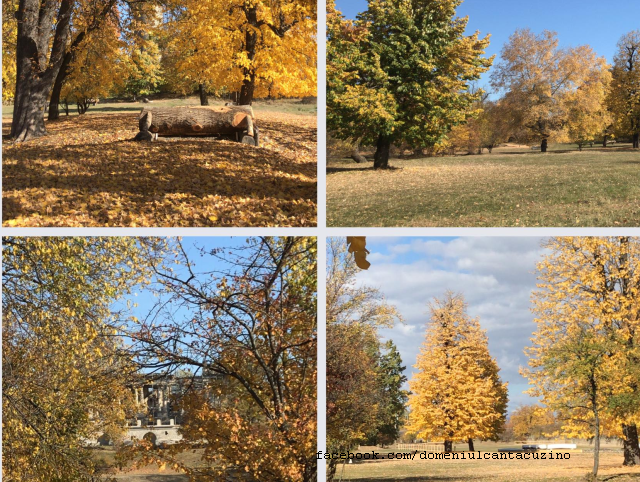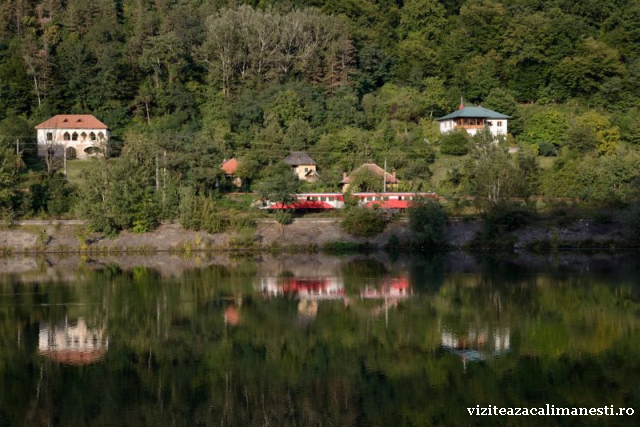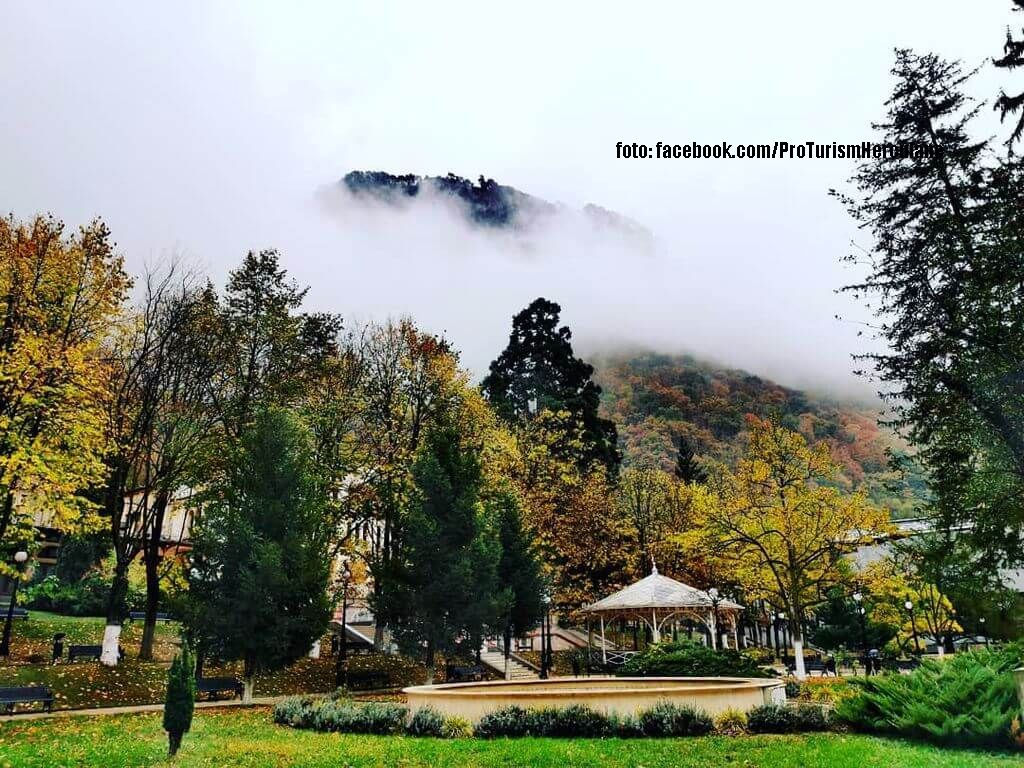Cultural tourism in Romania
Heritage buildings and the appetite for culture

Daniel Onea, 24.08.2023, 14:00
The interest has been growing, in Romania, for the old noble residences, in recent years. Whether we speak about the increasing number of those who are anxious enough to set about roaming the villages in search of old manor houses, of whether it’s about the entrepreneurs who embark themselves upon the adventure of restoring such buildings to their pristine beauty, a trend can be noticed, whose widening scope targets the rediscovery of Romania’s out-of-town nobles’ castles and residences. If we take into account the built cultural heritage market, Romania has a very great Advantage. Or at least that’s a what the president of the ARCHÉ Association, Alina Chiciudean, says.
We have natural landscapes with absolutely unique anthropic elements. The people I meet belong to the category of tourists who are in search of something a little bit more than the star-monuments. Were we a standard tourism agency, we would most likely visit Bucharest, we would take a one-day trip somewhere on the Prahova valley, ticking the Bran Castle, the Peles Castle and, if the case, the Danube Delta, if we have enough time on our hands. Instead, we offer authentic experiences, which means that, if we also head from Bucharest to the North, we can have a stopover at the Cantacuzino Estate in Florești. Located nearby Ploiesti, it is an impressive estate, with a surface area of 150 hectares, it is a former hunting park, with a promenade park, a main building and the outhouses. There we would not visit the place only; we would not just take a walk around the beautiful estate. Tourists can get to know members of the local community, children and youngsters in the commune where they turn up every week, whenever an activity is on offer, staged by the foundation that manages the estate, and that is how they can have the chance to discover the real Romania and can make the most of the freshness of ideas of those who have been living in the rural regions all their lives and whose connection with nature is different, they have a different angle of seeing things. I think it is the most beautiful and the most rewarding experience in tourism. Many times I’ve been asked to offer such experiences, mainly by our partners in Europe.
In north-eastern Romania’s Iasi County there is the Tibanesti commune. Here we have an architecture monument that stands out, which was built in the early 19th century. It was erected by the Carp family of boyars, hailing from the Baltic countries and settling there in the 16th century. It is another place where becoming familiar with the heritage ties in with the journey into the local craftsmen’s fascinating universe. Here is the president of the ARCHÉ Association, Alina Chiciudean, once again.
There, one year after the next, friends and partners of ours stage events, organize a summer school and have a complete multiannual program under the heading We strike the iron at the manor house. Were we to go there, we will most likely met craftsmen who do their work proper so we can have the fully-fledged experience of that. It is an experience where you can see the craftsman in his workshop and then you can have the chance to see that some of the elements there are little by little integrated into the process of the building which is a historical monument. Hopping from one part of Romania to the other, to southern Transylvania’s Apos locality, tourists who come with their families can write the names of their children themselves, on a tile manufactured by a traditional craftsman. We have a great many options. The thing is to seek that particular sort of activity, which has been more and more appreciated. Through the arch over time connecting those who have always lived like that to today’s, truly beautiful and rewarding things can come out of that, especially for the younger generation.
The ARCHÉ Association is a non-governmental, non-profit organization carrying research, preservation, highlighting and promotion activities for the cultural heritage. As part of this organization’s activity, the only program has been developed, for the rediscovery of Romania’s less well-known castles, under the heading Castle Break. It happened ten years ago. At present, the big tourism agencies try to integrate those monuments, some of them being refurbished, in the packages they offer their clients. Actually, the profile of the tourist has changed throughout the years, says the president of the ARCHÉ Association, Alina Chiciudean.
What I can say, though, at least as far as the post-pandemic period of time is concerned, is that people no longer seek a purely aesthetic discovery, they also want to leave their mark on the beautiful spot they’ve reached. Lat year, even two years ago, we came up with many such initiatives, so that the tourist can become a gardener for a whole afternoon, after we’ d got the required approvals. Works in a historical garden, that cannot be done by just anybody, so the experience is all the more precious given it complies with all the procedures and standards in place. Therefore, in autumn and in spring, we plant, we clean a garden and we’re aware our presence and visit on the premises will surely be felt there, and are there to last. That’s where the beauty of the heritage lies. Once you arrive in such a place, you realize you have hundreds of years of work in front of you, of work whose progress has been achieved little by little, in the buildup to the estate or the monument you hit upon. So what we have here is a kind of involvement tourism, while foreign tourists search for that in particular. They are quite used to participate, to have a quite active life. They’re young people, they’re still strong, and then, in turn, we try to offer them, in Romania, such standardized experiences, but that happens upon request, most of the time. We have an interdisciplinary team, architects, historians, art historians, PR specialists, we have all the professions related to cultural heritage. We can join them all along and explain true stories and not just fairy tales or legends of the place. They will learn something and will have something to eat straight from the farmer nearby or from the local cuisine. Some work will be done in the garden, for a little while, outdoors. Of course, beautiful photos, unavoidably, will also be there, but the experience is complete.
Speaking about tourists’ reaction upon their departure from Romania, here is the president of the ARCHÉ Association, Alina Chiciudean, once again, this time relishing in reminiscing a professional development project of the youngsters who chose heritage-related jobs for their career. Back then Alina accompanied a group from the Low Countries, who were on a sightseeing tour of Bucharest city center.
The visit was not guided by someone exclusively specializing in tourism guidance, but by one of our colleagues, an architect, specializing in creative writing in London. They never imagined Bucharest had so many things to offer. The mix of styles, of cultures, people’s generosity to offer explanations, all that make a kind of experience which very powerful for those who arrive in Romania. They are very pleasantly surprised with what they’ve found and perhaps that’s where the beauty lies, of Romania and its places, that including the capital city. That may come as something surprising for the people, as on the website you cannot make sense of what’s in store for you. And maybe the feature we’re doing together right now does not clearly reveal what they can find there. Rather, it is obvious you need to show up with your heart open and allow yourself to be surprised.
As we speak, roughly one thousand out-of-town urban residences of the local elites, from the 16th to the first half of the 20th century are preserved on the territory of Romania. Some of them have been restored, some are degrading, while others are the bone of contention for inheritors in various lawsuits. Castles can also be found in cities, some of them housing museums or playing host to various events.(EN)






























